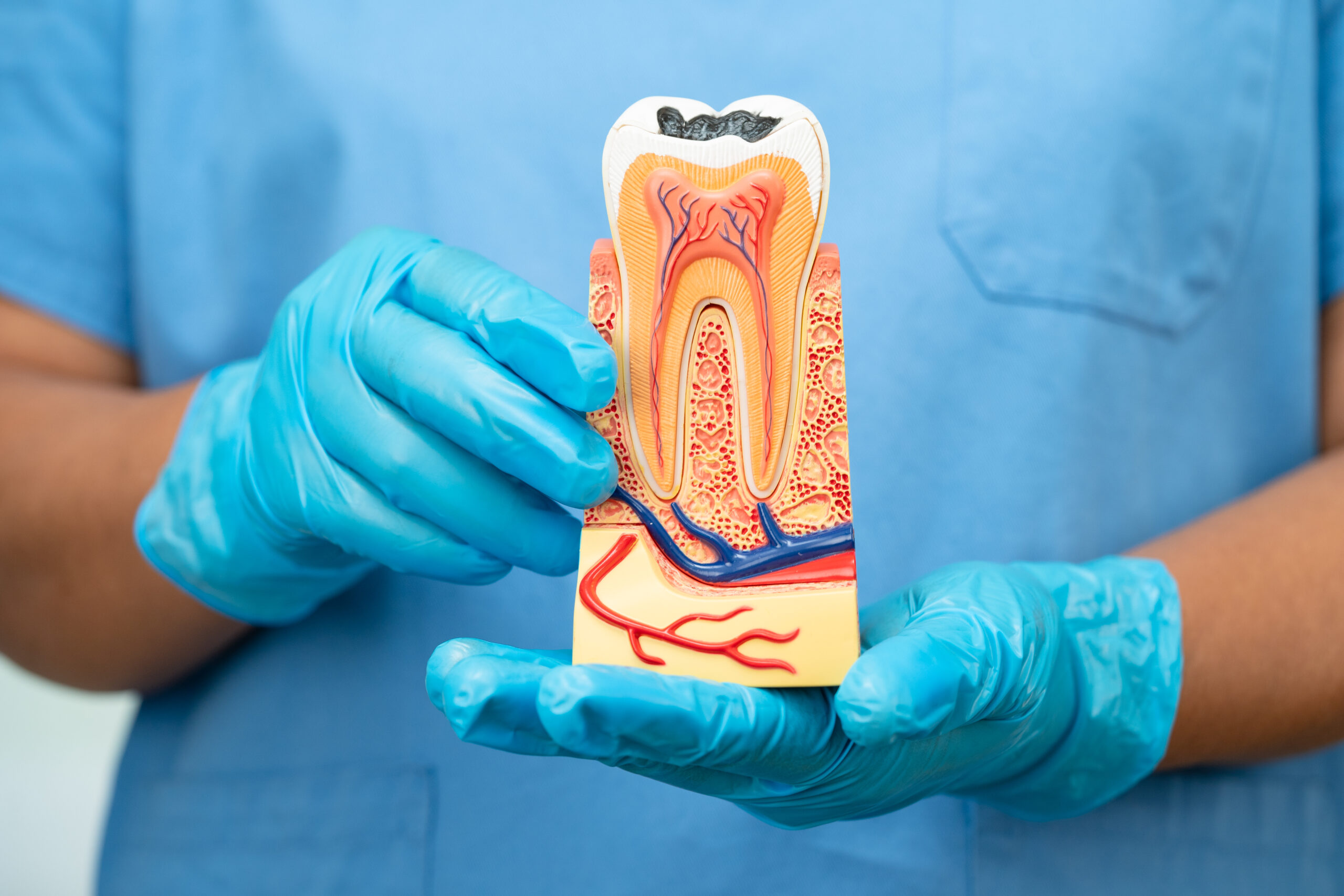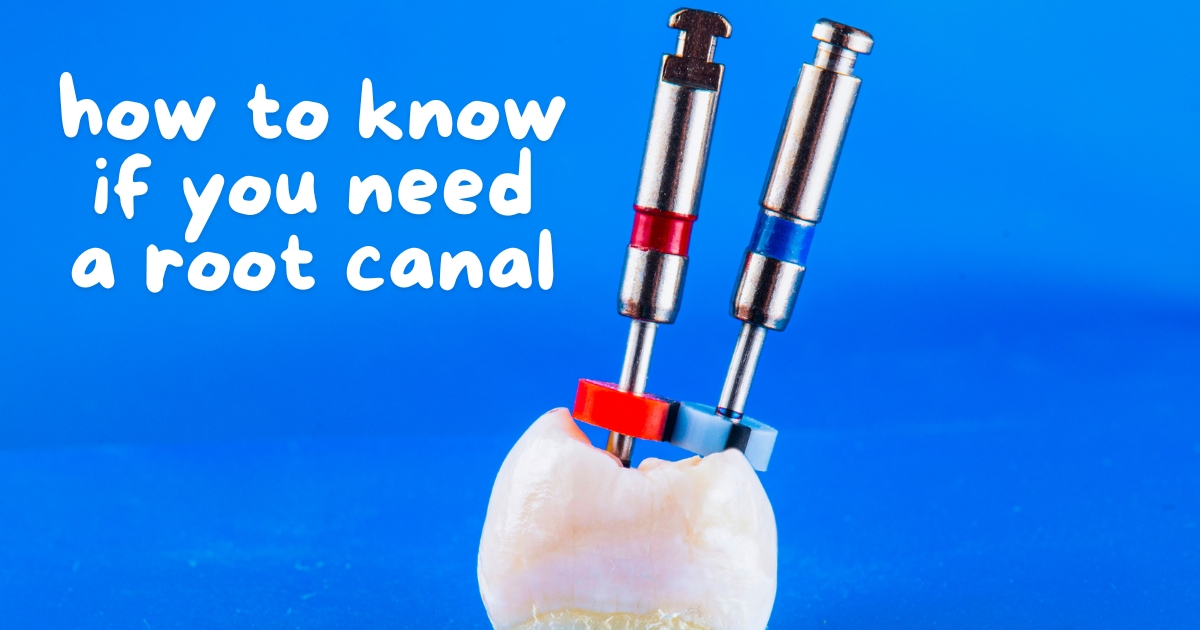We are not a registered Medicare/Medicaid Provider

Are you experiencing persistent tooth pain or sensitivity? Do you have swollen or tender gum around a particular tooth? If so, it might be time to consider getting a root canal. Root canals are often associated with pain and discomfort, but they are a crucial dental procedure that can save your natural teeth and alleviate pain. In this blog post, we’ll walk you through the signs and symptoms of when to consider a root canal, as well as everything else you need to know about this important dental treatment. So sit back, relax, and let’s dive in!
What Is A Root Canal?
A root canal is a dental procedure that removes the infected or inflamed pulp from the tooth’s interior. The pulp contains nerves and blood vessels, which are essential during the development of teeth but are no longer needed once matured.
The need for a root canal arises when there is damage to the tooth’s nerve due to decay, trauma, or injury. An untreated cavity can lead to an infection in the root canal system, causing pain and swelling.
During a root canal treatment, your dentist will remove the damaged pulp from inside your tooth using specialized tools. After removing all of the infected material, they clean and disinfect it before filling it with a special material called gutta-percha.
After completing this step, your dentist may recommend placing a crown over your treated tooth for added protection against further damage or decay.
In summary, a root canal is necessary when there is inflammation or infection in your tooth’s nerve due to various reasons such as cavities or injuries. It involves removing damaged tissue from within your tooth before sealing it up with special materials like gutta-percha and sometimes covering it with crowns for extra protection.
Types Of Root Canals
When it comes to root canals, there are a few different types. The most common type is the standard root canal, which involves removing infected or damaged tissue from the tooth’s pulp chamber and sealing it up.
Another type of root canal is the apicoectomy, also known as a root-end resection. This procedure is done in cases where infection persists after a standard root canal treatment. During an apicoectomy, the dentist removes the tip of the tooth’s roots along with any infected tissue.
A pulpotomy is another type of root canal that’s usually only performed on children with baby teeth. It involves removing part of the pulp from inside the tooth and filling it with a special material to prevent further decay.
For people who have narrow or curved canals in their teeth, there’s also something called a rotary endodontics procedure. This technique uses specialized tools to make cleaning out difficult-to-reach areas much easier and more effective.
There are several different types of root canals available depending on your specific needs and situation. Your dentist will be able to determine which one is right for you based on factors like your age, dental history, and overall oral health status.
Signs And Symptoms Of A Root Canal
When it comes to dental health, it’s essential to pay attention to any signs and symptoms that may indicate the need for a root canal. A root canal is necessary when there’s an infection or inflammation in the pulp of your tooth. Here are some key signs and symptoms you shouldn’t ignore:
1) Severe pain: If you’re experiencing severe pain while chewing or biting down, this could be a sign of a root canal issue. The pain can be sharp, persistent, and difficult to alleviate with over-the-counter medications.
2) Sensitivity: Tooth sensitivity is another common symptom of needing a root canal. You might experience sensitivity when eating hot or cold foods/drinks or even touching the affected tooth.
3) Swelling: Swelling around the gums near the affected tooth is also a red flag for potential root canal issues. This swelling can be tender and painful to touch.
4) Discoloration: A discolored tooth that has turned dark brown/black may indicate nerve damage requiring treatment like a root canal.
5) Gum Pimple/Bump: If you notice any bumps/pimples on your gums that persist after several days or weeks, it’s best to consult your dentist as soon as possible.
Knowing these warning signs could save you from further discomfort and complications in your oral health. It’s always better to err on the side of caution by seeking immediate professional dental care at any sign of trouble!
When To Consider A Root Canal
When it comes to dental treatments, root canals are often considered one of the most dreaded procedures. However, in some cases, a root canal may be necessary to save your tooth and prevent further damage or infection.
So how do you know when it’s time to consider a root canal? One common sign is persistent pain or sensitivity in the affected tooth, especially while eating or drinking hot or cold foods. You may also notice swelling around the area or experience discomfort when applying pressure.
Other symptoms that may indicate the need for a root canal include discoloration of the tooth, tenderness in nearby gums, and recurring abscesses. In some cases, there may be no noticeable signs at all until an X-ray reveals damage to the pulp inside your tooth.
If you’re experiencing any of these symptoms, it’s important to schedule an appointment with your dentist as soon as possible. They’ll be able to evaluate your situation and recommend appropriate treatment options – which may include a root canal if deemed necessary.
Remember: ignoring potential signs of damage can lead to more serious problems down the line. By addressing issues promptly and seeking professional advice from qualified dental professionals, you can help ensure long-term oral health and well-being.
Bottom Line
As we wrap up this article, it’s important to remember that the decision to undergo a root canal should be taken seriously. While there are some common signs and symptoms that may indicate the need for a root canal, it’s always best to have a professional assessment from your dentist.
If you’re experiencing any pain or discomfort in your tooth or gums, don’t hesitate to schedule an appointment with your dentist as soon as possible. Early intervention can often prevent more serious dental issues down the line.
It’s also worth noting that while root canals have traditionally been associated with discomfort and anxiety, modern techniques and technologies have made them much less invasive and painful than they once were. So if you do find yourself needing a root canal, rest assured that you’ll be in good hands with your dental team.
Keeping up with regular dental checkups and addressing any potential issues early on is key when it comes to maintaining good oral health. And if the time does come for a root canal, know that there are many options available for making the process as comfortable and stress-free as possible.
A: Thanks to modern anesthesia and technology, root canals are typically not painful. They often relieve the pain caused by an infected or damaged tooth.
A: Regular dental check-ups and good oral hygiene practices can help prevent the need for a root canal. However, if you experience any of the signs and symptoms mentioned in this article, it’s important to schedule an appointment with your dentist as soon as possible.
A: Recovery time varies from person to person but is usually minimal. You may experience some discomfort or sensitivity for a few days after the procedure but should be able to return to normal activities within 24-48 hours.




